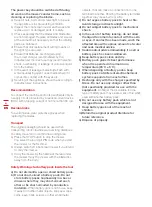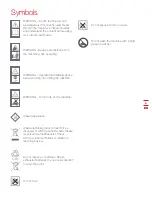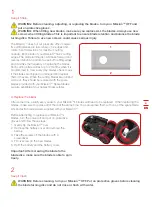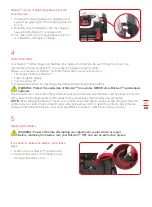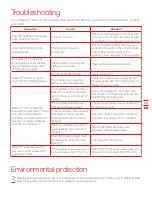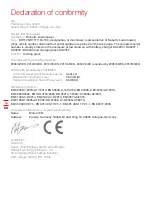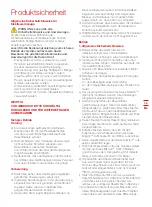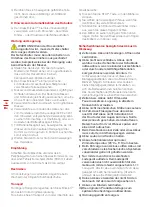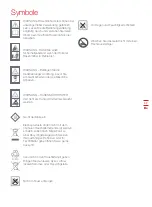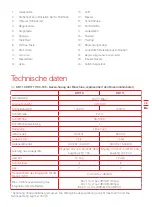
4
EN
The power key should be switched off during
all work on the mower’s under frame, such as
cleaning or replacing the blades.
a) Keep all nuts, bolts and screws tight to be sure
the appliance is in safe working condition.
b) Inspect the robotic lawnmower each week and
replace worn or damaged parts for safety.
c) Check especially that the blades and blade disc
are not damaged. Replace all blades and screws
at the same time if necessary so that the rotating
parts are balanced.
d) Ensure that only replacement cutting means of
the right type are used.
e) Ensure that batteries are charged using
the correct charger recommended by the
manufacturer. Incorrect use may result in electric
shock, overheating or leakage of corrosive liquid
from the battery.
f) In the event of leakage of electrolyte flush with
water/neutralizing agent, seek medical help if it
comes into contact with the eyes etc.
g) Servicing of the appliance should be according to
manufacturers’ instructions.
Recommendation
To connect the machine and/or its peripherals only to
a supply circuit protected by a residual current device
(RCD) with a tripping current of not more than 30 mA.
Residual risks
To avoid injuries, wear protective gloves when
replacing the blades.
Transport
The original packaging should be used when
transporting robotic lawnmower over long distances.
To safely move form or within the working area:
a) Press the STOP button to stop the mower.
You select the four digit PIN code when you start
the mower for the first time.
b) Always switch off robotic lawnmower if you intend
to carry the mower.
c) Carry the mower by the handle at the rear under
the mower. Carry the mower with the blade disc
away from the body.
Safety Warnings for battery pack inside the tool
a) Do not dismantle, open or shred battery pack.
b) Do not short-circuit a battery pack. Do not
store battery packs haphazardly in a box or
drawer where they may short-circuit each
other or be short-circuited by conductive
materials.
When battery pack is not in use, keep
it away from other metal objects, like paper clips,
coins, keys, nails, screws or other small metal
objects, that can make a connection from one
terminal to another. Shorting the battery terminals
together may cause burns or a fire.
c) Do not expose battery pack to heat or fire.
Avoid storage in direct sunlight.
d) Do not subject battery pack to mechanical
shock.
e) In the event of battery leaking, do not allow
the liquid to come into contact with the skin
or eyes. If contact has been made, wash the
affected area with copious amounts of water
and seek medical advice.
f) Seek medical advice immediately if a cell or
battery pack has been swallowed.
g) Keep battery pack clean and dry.
h) Battery pack gives its best performance
when it is operated at normal room
temperature (20°C ± 5°C).
i) When disposing of battery packs, keep
battery packs of different electrochemical
systems separate from each other.
j) Recharge only with the charger specified by
Kress. Do not use any charger other than
that specifically provided for use with the
equipment.
A charger that is suitable for one
type of battery pack may create a risk of fire when
used with another battery pack.
k) Do not use any battery pack which is not
designed for use with the equipment.
l) Keep battery pack out of the reach of
children.
m) Retain the original product literature for
future reference.
n) Dispose of properly.




